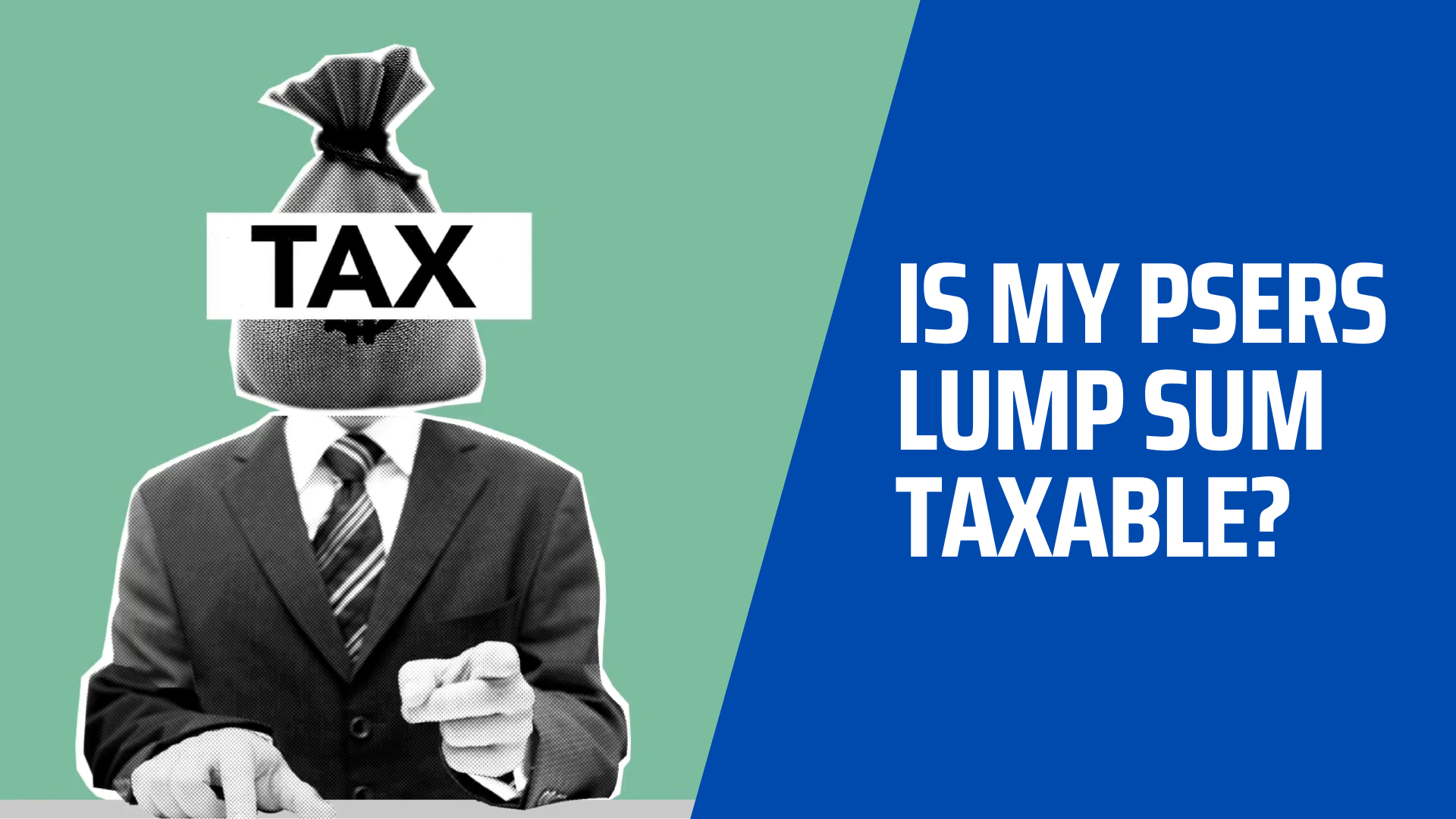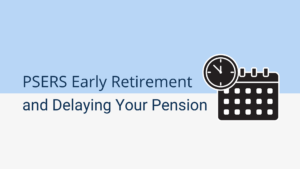*TeachersRetire is not affiliated with, endorsed or sponsored by PSERS*
There is a lot of confusion about the PSERS lump sum withdrawal. We often hear questions like:
- What is it and how does it work?
- What can I do with it?
- Should I take it out or keep it in?
- What does it mean for my pension benefits?
These questions are especially important for PSERS retirees who have many years of credited service because it could be a $100,000+ financial decision. Before we go too much further, let’s make it clear what we mean by the “lump sum”.
Generally, when you hear the term PSERS lump sum, what is being referred to is the grand total of your contributions and the interest earned in your PSERS account. Depending on when you started your PSERS service, you contribute between 5.25-10.30% of each paycheck to your account. Over time, your contributions grow at a fixed interest rate of 3%. You can imagine that over a 20+ year career, not only will you have contributed a lot of money to your account but it will also have earned a fair amount of interest.
You can find how much you have accumulated in contributions and interest in your account at the top of Page 2 of your PSERS Statement of Account.

If you do not have a recent statement, you can find your contributions and interest by logging into your PSERS Member Self-Service portal here.
Now, let’s answer the five most common questions about the PSERS lump sum.
Will I lose my monthly pension if I take my
PSERS lump sum?
No. The truth about your lump sum and your monthly pension payment is that you can have both! Choosing to take out your lump sum does not mean that you are giving up your monthly pension. However, there is a trade-off and here is how it works.
When you are ready to retire and are choosing a pension option, you will choose whether or not to withdraw your contributions and interest. You might be asking yourself why in the world would I not withdraw that money? Who would say no to getting all their contributions back? This brings us to the big trade off- if you decide to withdraw your lump sum your pension benefit will be lower for the rest of your life.
Let’s look at an example:
Carl is retiring from PSERS after 30 years. He is deciding whether to withdraw his lump sum or take the higher pension payments. His contributions and interest are $200,000. Carl’s pension payment estimate looks like this:
| Payments Without Taking Lump Sum | Payments Taking Lump Sum | ||
| Maximum Single Life Annuity | $4,000 | Maximum Single Life Annuity | $3,200 |
| Option 1 | $3,600 | Option 1 | $2,800 |
| Option 2 | $3,200 | Option 2 | $2,400 |
| Option 3 | $3,400 | Option 3 | $2,600 |
| Option 4 | $3,500 | Option 4 | $2,700 |
You can see how withdrawing the lump sum reduces each pension payment by $800 per month. Regardless of which option he chooses, Carl must decide whether he would rather have an additional $800 per month or $200,000.
To make it simple, you will eventually have to decide whether you want more money every month guaranteed for life or a larger sum of money right now but less monthly income.
Will I pay taxes on my lump sum?
Maybe. If you elect to withdraw your lump sum and deposit the money into anything other than a pre-tax retirement account, it will be taxed as regular income. The amount of tax you will owe depends on the tax bracket you are in that year. Since your lump sum could be over $100,000, this could drastically increase your taxable income and possibly bump you into a higher tax bracket. If you decide to do this, you should consult with a CPA to make sure that you are having enough taxes withheld from the lump sum. You don’t want a surprise tax bill from the IRS!
There is a way to take your lump sum and not pay any income tax on it right now. If you roll the money into a pre-tax IRA (individual retirement account), it will be considered a non-taxable transaction. However, you will owe income tax on any money that you withdraw from your IRA in the future.
What are the benefits of taking the lump sum?
There are several benefits to choosing to withdraw your PSERS lump sum. The most important is that you can invest this money and potentially have it grow over time. This is a good way to build wealth and accumulate more money for the future.
It is likely that your monthly spending will change at some point; either by choice or something unexpected. However, your pension payment will never change. Your lump sum money could help you adjust as your needs and expenses change overtime. For example, twenty years after retirement you might need several hundred dollars more per month to cover home health care. While your pension payment cannot be increased to help cover this, you could use money from your withdraw which you may have invested and available.
You may find that you don’t need this money to cover your expenses. In this case, a beneficiary can inherit it when you pass away. If you are charitably inclined and roll your lump sum into a retirement account, you could name your favorite charity as a beneficiary and the money could go to this organization free of tax at your death.
In general the main benefit of keeping your lump sum is the flexibility to use the money as you need it and have an opportunity for it to grow.
What are the downsides of taking the lump sum?
The downside of taking your lump sum is that your monthly pension benefit will be lower. Some retirees would rather have the security of more monthly income. This is especially true for those who would choose to not invest their PSERS lump sum money because they do not want investment risk. This person may be better off electing the higher pension payment instead.
Am I hurting my spouse by taking my lump sum?
No. Withdrawing the PSERS lump sum does not hurt your spouse, but it could impact them in the future. How much it impacts them depends on which pension option you choose and whether you die before them.
If you choose pension Option 1, your spouse could inherit a lump sum of money at your death. If you decide to take out your contributions and interest this death benefit would be much lower. Learn more about pension Option 1 here.
If you choose pension Option 2, Option 3 or Option 4 with your spouse listed as the survivor annuitant, they will continue to receive your pension payment after you die. Should you choose to take out your contributions and interest, your pension payment is lower and your spouse would have less money coming each month. LEarn more about these pension options here.
So, your spouse is impacted by your lump sum decision. However, it is important to remember that if you don’t use or spend all of the money, your spouse could inherit your lump sum at your death. If you roll it into a retirement account, make sure to name your spouse as the primary beneficiary.
With careful planning your spouse need not be harmed financially if you decide to withdraw your contributions and interest.



